Located in the northwestern corner of Mexico, the Tijuana Cultural Center (CECUT-Centro Cultural Tijuana) has focused its efforts in understanding migration. That is why, the current administration has pushed for a plethora of projects that emphasize the different issues, both national and international, that come with the movement of people across the border and how all of this impacts on their identities and sense of belonging.
Construyendo puentes en época de muros. Arte Chicano / Mexicano de Los Ángeles a México exhibition allows us to Delve into what it means to migrate for those who live through it: the search for an identity, the economic relationships that they establish, the new communities that appear and the implicit narratives of a population with different origins. Being in one of the most crossed borders into the US makes for the CECUT to be honored as its final host, after having traveled thorough Mexico.
Although the exhibition was originally conceived for people to physically attend it, this new digital experience gives us the advantage of reaching audiences that hadn’t originally planned to attend; this in turn expands the capabilities of the exhibition to be appreciated.
The exhibition, originally programmed to be presented and enjoyed on a physical manner, is strengthen on this digital plane because it can reach new audiences, it can dialogue with different publics on a wider space and, therefore, it can have different readings.
CECUT celebrates all kinds of creative forms and expressions that contribute to sensitize about migratory issues and the rich cultural diversity that exists in our society.
curatorial text
Artists: Roberto de la Rocha, Gilbert “Magu” Lujan, Frank Romero, Patrick Martinez, Johnny “KMNDZ” Rodriguez, Jose Ramirez, Enrique Castrejon, Judy Baca, Donna Dietch, Carlos Almaraz, Gil Garcetti, Ana Serrano, Shizu Saldamando, Gary Garay, Ramiro Gomez, Einar and Jamex de la Torre, Viviana “Viva” Paredes, Man One, Eloy Torrez, Patssi Valdez, Roberto Gil de Montes, Gronk, Yolanda González, Judithe Hernández, Linda Vallejo, Gabriela Ruiz, John Valadez, and Leticia Maldonado.
Over 50 years of existence, the ever-evolving Chicano art has shaped itself into one of the main movements of the American creative canon. Established among four cultures ―the Pre-Columbian, the invasive Hispanic, Mexico itself and the United States of America― Chicano art draws on all four and evolves out of both its roots and the decades of oppression its practitioners and their families have sustained.
Since the violent benchmark the 1970 Moratorium street clash in East Los Angeles, California, Latinos have made progress economically, socially and politically. However, Chicanos and Latinos continue to be a marginalized group ―outsiders― in their own home in the United States and even in Mexico. This has continued to be the case even as the Latino population proportion in major US cities (such as Los Angeles, New York and Chicago) has grown in size as well as in political power.
Born in the middle 1960s ―along with Vietnam War protesters and the Black Power Civil Rights movement― the Chicano statement challenged racial categorization and derisive stereotypes widespread in the Anglo population as well as the dropout-riddled public education establishment that proclaimed Latinos too inferior to attain a middle-class standard of living.
These issues became the subjects of early Chicano artists. The expressionistic, outspoken realism of their works appealed to an art public that had become jaded by successive establishment trends in non-representative painting.
Through highly developed skills and originality, these artists of dual Mexican American heritage, opened the windows into Latino culture, not just by marking the conflicts with Anglo society, but also by flaunting, celebrating and elevating aspects of Latino culture and tradition that the Anglo world could no longer ignore.
The advancements and hardships of the past five decades have helped to shape Chicano and Latino art’s evolution. These artists have expanded their creative expression, demonstrating an agility to develop and refine their own mythologies, methodologies and philosophies. They have introduced a remarkable, original school of art into the history of art itself.
This exhibit brings a multigenerational selection of works by Chicano and Latino artists from Southern California, all of whom are of Mexican heritage. The exhibit examines how these artists explore their cultural hybridity through five significant themes: Rebel Diamonds from the Sun, Imagining Paradise, Outsiders in their Own Home, Mapping Identity and Cruising the Hyphenate. Simultaneously, in widening the lens of how Chicano and Latino art is viewed beyond its strict geographical home, the exhibit illustrates these artists’ inexorable ties to Mexico and how they transcend singular identity and borders.
By no means does this exhibit intend to serve as a definitive survey of Chicano art; nor does it present itself as the sole arbiter ―or final word― in defining what is or isn’t Chicano art. On the contrary, this exhibit continues the exploration of Los Angeles art in dialogue with Mexico, signifying a historic moment by the presenting Chicano art as original school of American art.
node 01
Chicano art began in the 1960s as the collective grito ―scream― of this aroused population to confront the majority Anglo culture. Latino soldiers were dying in disproportionate numbers in Vietnam. Latino fieldworkers were struggling with terrible work conditions and ridiculously low wages in the vegetable fields of California’s Central Valley. Meanwhile, in the barrios, law enforcement had stepped up arrests of ice-cream street vendors and young Chicano motorists accused of illegally “cruising” ―re-imagined fact in Frank Romero’s The Closing of Whittier Boulevard―. The movement artist avatars were aroused by the systemic injustice pointed directly at the barrio’s inhabitants. Their concerns were voiced by this engaged and growing cadre of supremely talented young individuals who put their artwork first as murals on the walls of their communities, then in publications and museums, and ultimately before a startled American public. They were practicing what Italian philosopher Umberto Eco called “semiotic guerrilla warfare”.
Decade after decade, these artists continue to rise up and empower others to effect change. They are determined to be recognized and accepted. They are Chicano and Latino artist who have evolved mightily since the 1970s. As their theory, skills, and ideals have developed, critics have both berated and congratulated them for moving on from message making to the ideals of fine art.
These are the Rebel Diamonds from the Sun, forged by the intense pressures of injustice and marginalization only to emerge bright hot and nigh unbreakable, as their creative expressions and processes expand, deepen and mature.
node 01
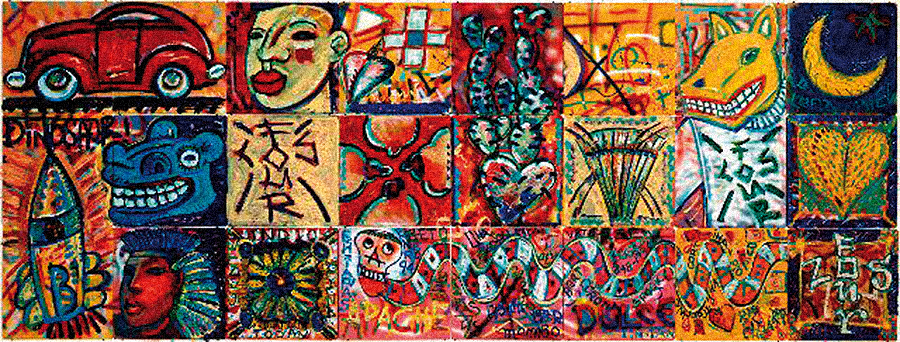
Los Four (Roberto «Beto» de la Rocha, Gilbert «Magu» Luján y Frank Romero)
Los Four 20th Anniversary Collective Mural, 1994
Acrylic on wood panels / 72 x 192 in.
AltaMed Art Collection, courtesy of Cástulo de la Rocha and Zoila D. Escobar
node 01

Patrick Martínez
America is for Dreamers, 2016-17
Neon installation / Various sizes
AltaMed Art Collection, courtesy of Cástulo de la Rocha and Zoila D. Escobar
node 01
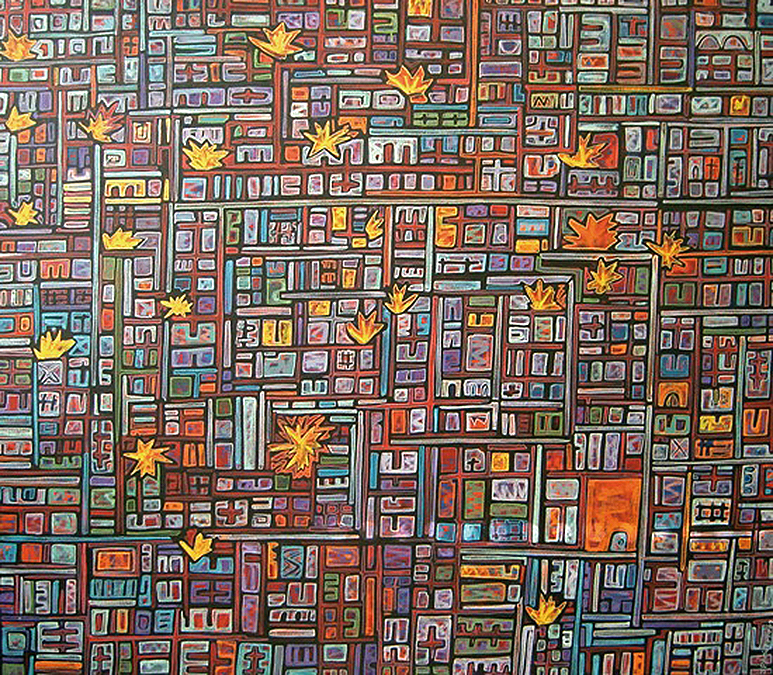
Jose Ramirez
Middle East L.A., 2009
Mixed media on canvas / 67.5 x 77.25 in.
AltaMed Art Collection, courtesy of Cástulo de la Rocha and Zoila D. Escobar
node 01
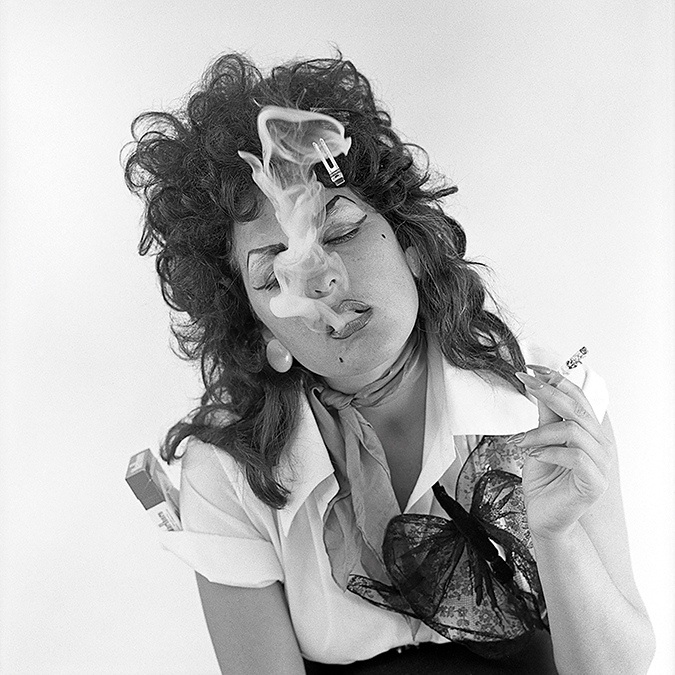
Judy Baca and Donna Deitch
Judy Baca as La Pachuca, 1976
Archival digital print on photographic paper / 24 x 24 in.
Courtesy of Social and Public Art Resource Center (SPARC)
node 01
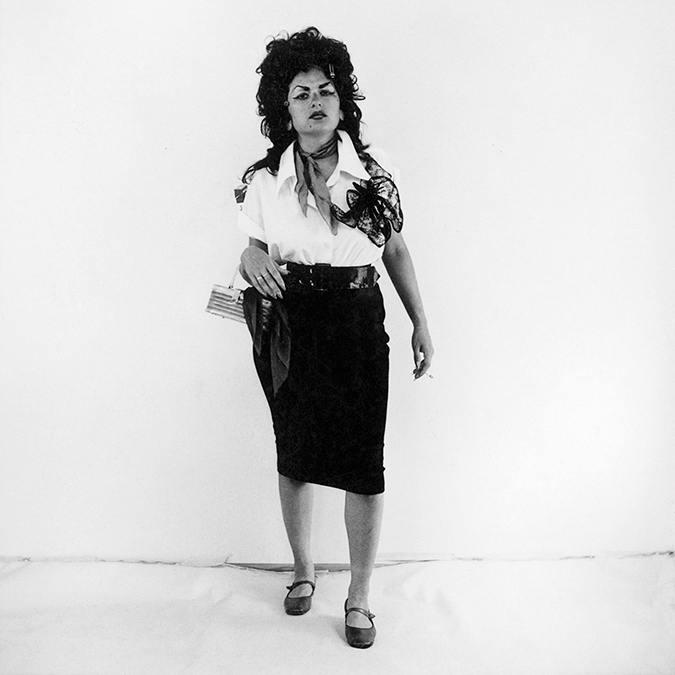
Judy Baca and Donna Deitch
Judy Baca as La Pachuca (I, II, III), 1976 (reproduced 2018).
Archival digital print on photographic paper / 38.5 x 38.5 in.
Courtesy of Social and Public Art Resource Center (SPARC)
node 01
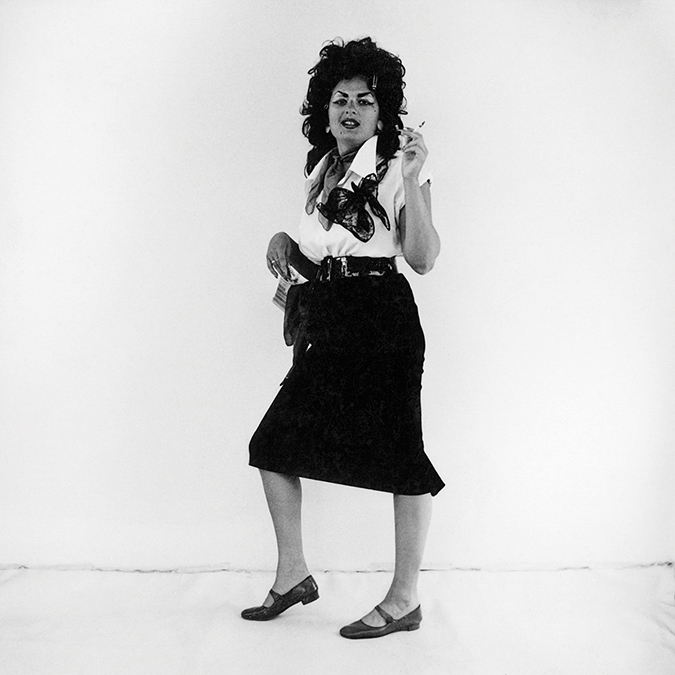
Judy Baca and Donna Deitch
Judy Baca as La Pachuca (I, II, III), 1976 (reproduced 2018).
Archival digital print on photographic paper / 38.5 x 38.5 in.
Courtesy of Social and Public Art Resource Center (SPARC)
node 01
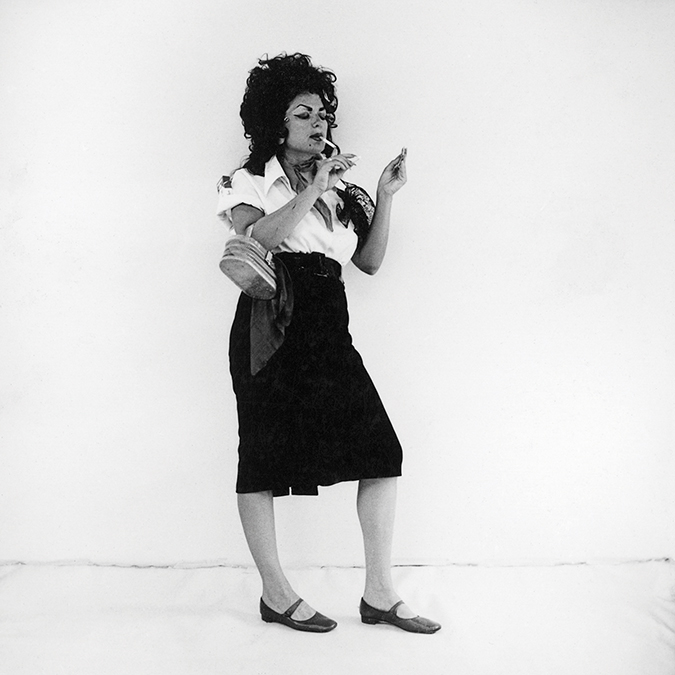
Judy Baca and Donna Deitch
Judy Baca as La Pachuca (I, II, III), 1976 (reproduced 2018).
Archival digital print on photographic paper / 38.5 x 38.5 in.
Courtesy of Social and Public Art Resource Center (SPARC)
node 01
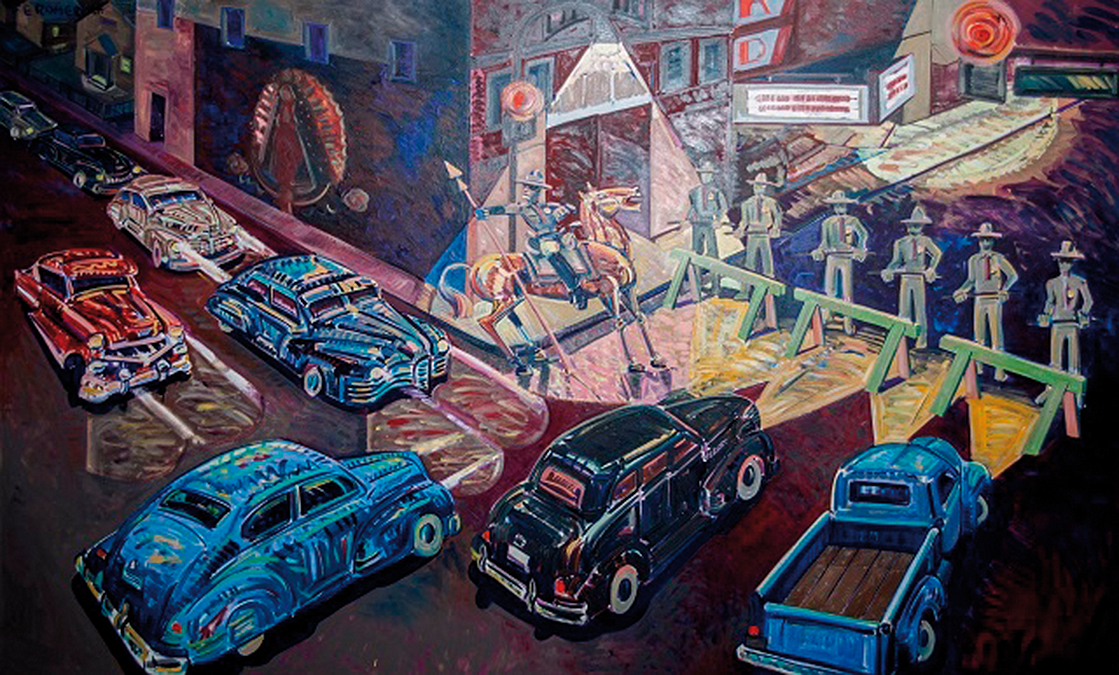
Frank Romero
The Closing of Whittier Boulevard, 1984
Oil on canvas / 66.25 x 108 in.
AltaMed Art Collection, courtesy of Cástulo de la Rocha and Zoila D. Escobar
node 01
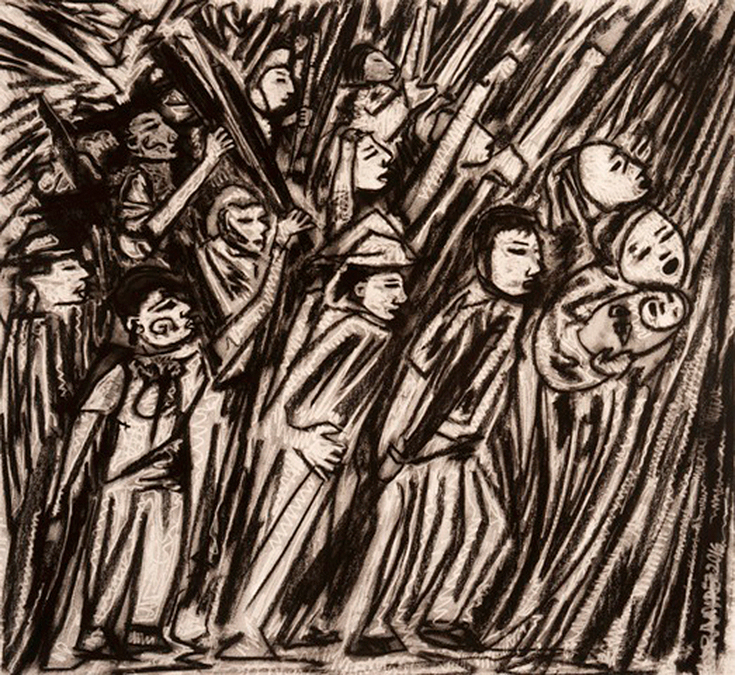
Jose Ramirez
Lucha, 2016
Charcoal on paper / 37 x 38 in.
AltaMed Art Collection, courtesy of Cástulo de la Rocha and Zoila D. Escobar
node 02
Los Angeles is often called the “City of Dreams”. It is a place that includes its own dream factory (Hollywood), consumer mecca (Rodeo Drive), and make-believe world (Disneyland), not to mention a subtropical Mediterranean climate, beaches, wetlands and mountains. Such a myth requires ignoring the indigenous and Mexican population already there. Hollywood helps to sustain that myth, since one rarely sees the city’s Latino majority depicted in studio feature films or network television series set in Los Angeles. But for the Mexican-descent population in Los Angeles, the “City of Dreams” ―that modern sense of the region as a paradise— came at their expense as freeways cut through their communities, and as a social institutions either neglected or discriminated against this population, isolating Chicanos from a city their ancestors had founded.
This history is often narrated in the social and political terms of the mid-century civil rights movements in the United States. But the arts were a critical element of this effort, placing the act of seeing on equal footing with rights-based demands. In claiming a space and an intention for their work, these artists offered both a critique of the society and an alternative social vision, leaving the aesthetic as an undefined area to be answered by the work itself.
In Imagining Paradise, these artists produce works that are at once insistent and ambiguous, calling the “City of Dreams” to account, while still dreaming nonetheless.
node 02
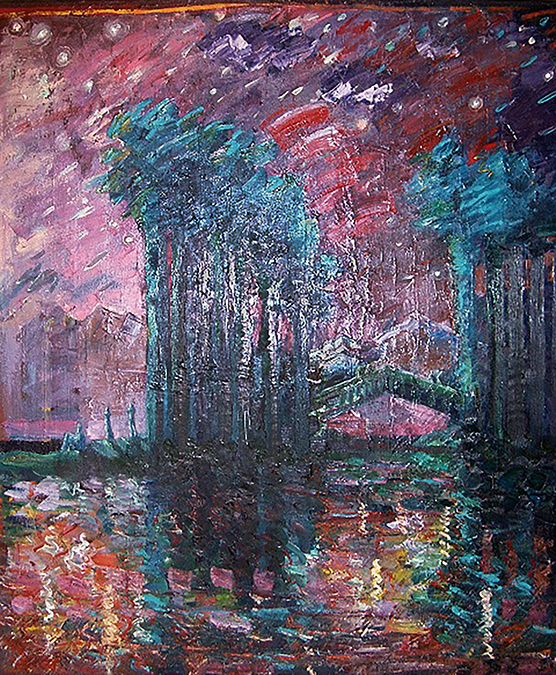
Carlos Almaraz
The Bridge in Deep Magenta, 1984
Oil on canvas / 60.5 x 50.5 in.
AltaMed Art Collection, courtesy of Cástulo de la Rocha and Zoila D. Escobar
node 02
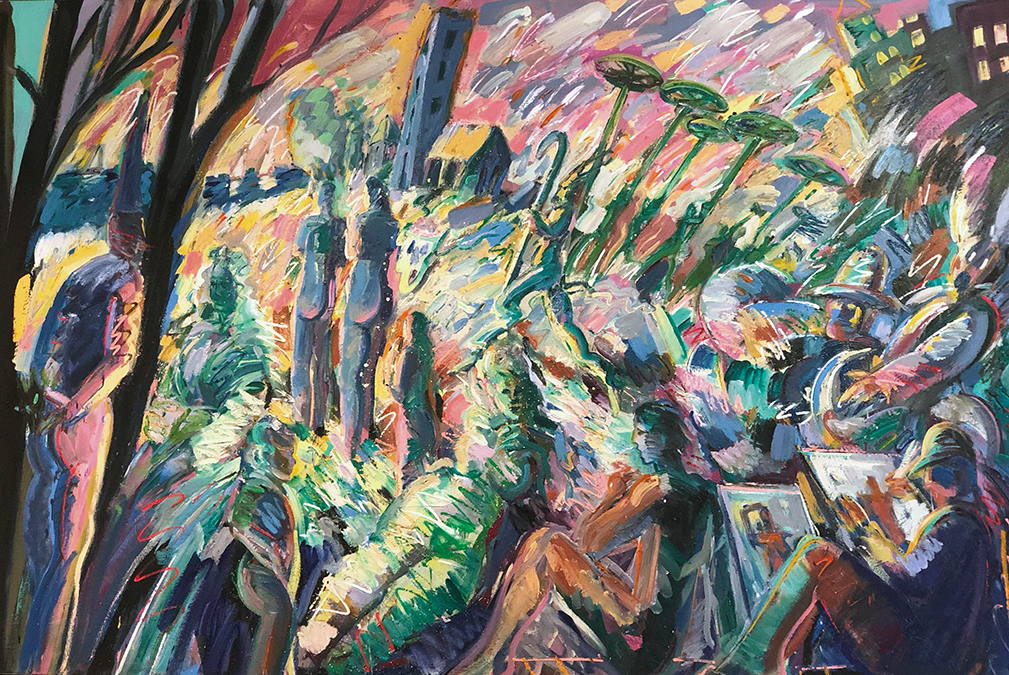
Carlos Almaraz
Yellow Morning, 2015
Oil on canvas / 72 x 108 in.
AltaMed Art Collection, courtesy of Cástulo de la Rocha and Zoila D. Escobar
node 02
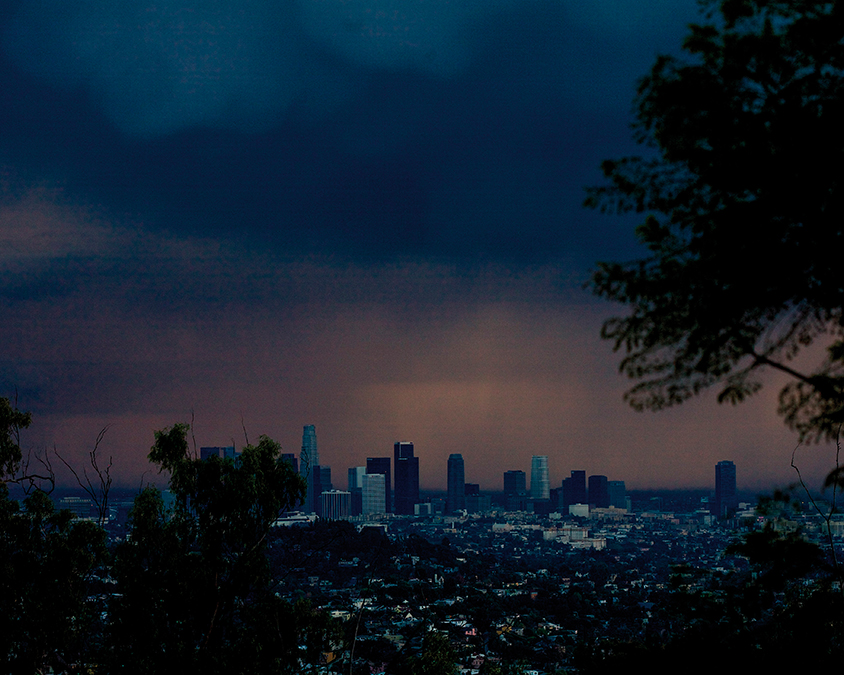
Gil Garcetti
Los Angeles Skyline (from Dodger Stadium), 2011
Chromogenic print / 11 x 16 in.
Courtesy of the artist
node 02
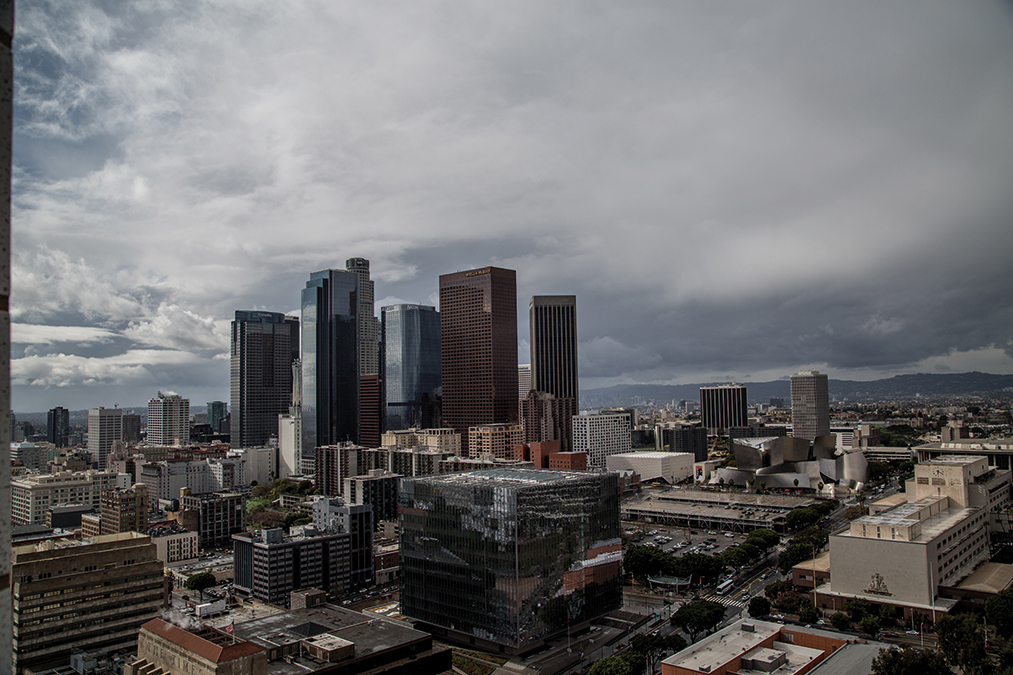
Gil Garcetti
Panorámica de Los Ángeles (from City Hall), 2017
Chromogenic print / 11 x 16 in.
Courtesy of the artist
node 02

Ana Serrano
Cartonlandia, 2008
Cardboard, paper, acrylic, and glue / 60 x 48 x 54 in.
AltaMed Art Collection, courtesy of Cástulo de la Rocha and Zoila D. Escobar
node 02
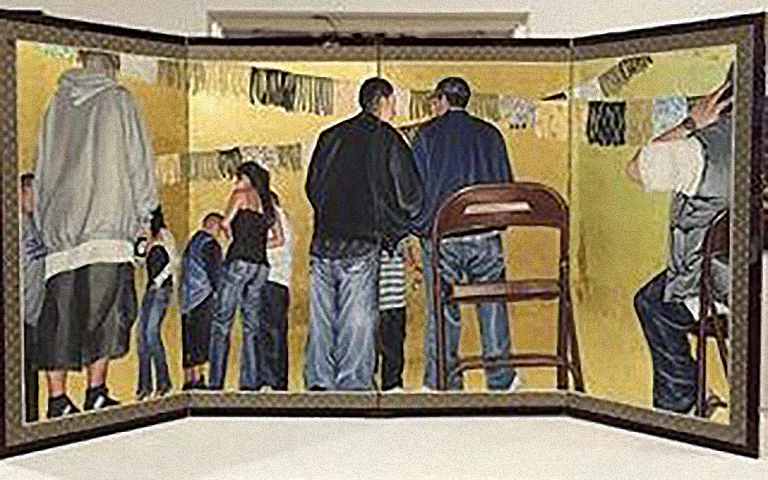
Shizu Saldamando
Highland Park Luau, 2006
Oil and collage on found screen / 32 x 64 in.
Courtesy of Ricardo Padilla Reyes
node 03
Histories of immigration, shifting demographics, and the impact of transnational trade policies like NAFTA have been points of departure for artists, curators and critics alike. Whereas exile and diaspora are issues that are inextricably bound to certain Latin American and United States based Latino artists, especially those directly impacted by displacement, the Chicana/o artist has a complex and fraught relationship to homeland because a binational —or even transnational— identity that is betwixt and between or “ni de aquí ni de allá”.
In the visual arts, Chicano art absorbs and redefines art movements like pop, neo-expressionism, and the like, but on an existencial level, it broaches the uncertainties of identity and belonging in relation to this betweenness. Many of the works in this section, save Viva Paredes’ sculpture A Blessing for a Wetback (2010), are figurative representations. Bodies at work have been an inextricable part of Chicano art with representations of migrant farmworkers laboring under Central Californian skies depicted frequently in murals, paintings and political graphics.
Figurative representations have often been the site in Chicano art for a reimagining and affirmation of identity, but references to the laboring body in this section are more likely under threat or surveillance, criminalization, and/or disappearance. The policing or scripting of activity in public or private spaces is a major concern to those perceived as extralegal, “outsiders” or “aliens”.
Location and dislocation define the spatial and temporal conditions of Chicano identity. Ironically, the avant-garde has historically championed marginal or so-called outsider artistic practices, such as that by self-taught or “folk” artists. For Chicano artists, their “outsider” status is not only tied to being suspicious of the mainstream artistic networks of power, but a broader questioning of the fixity of identity and national belonging.
node 03
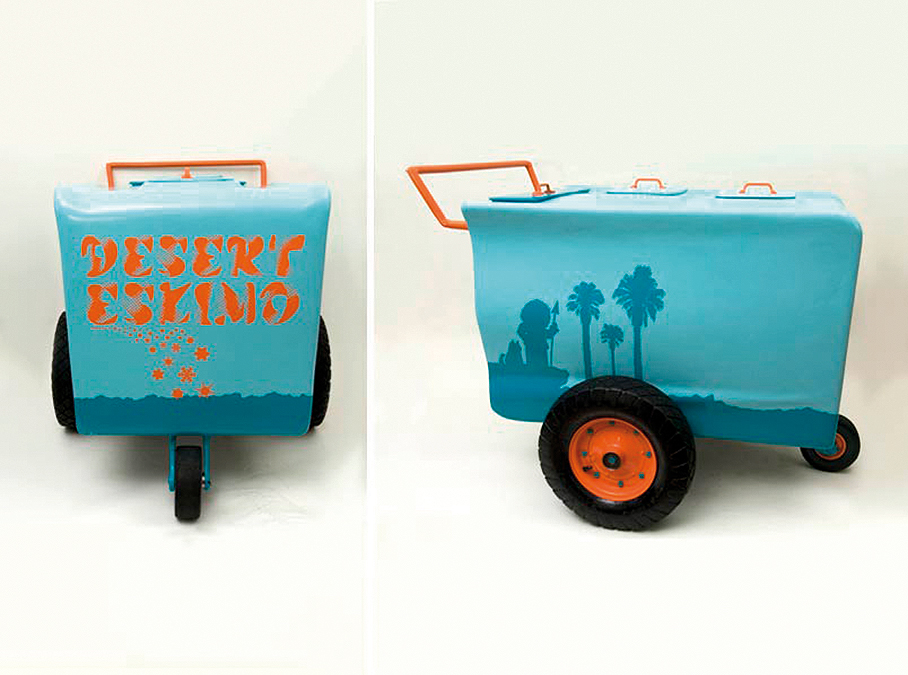
Gary Garay
Paleta Cart, 2004
Customized paleta cart with lacquer and enamel / 36 x 46 x 33 in.
Courtesy of the artist
node 03
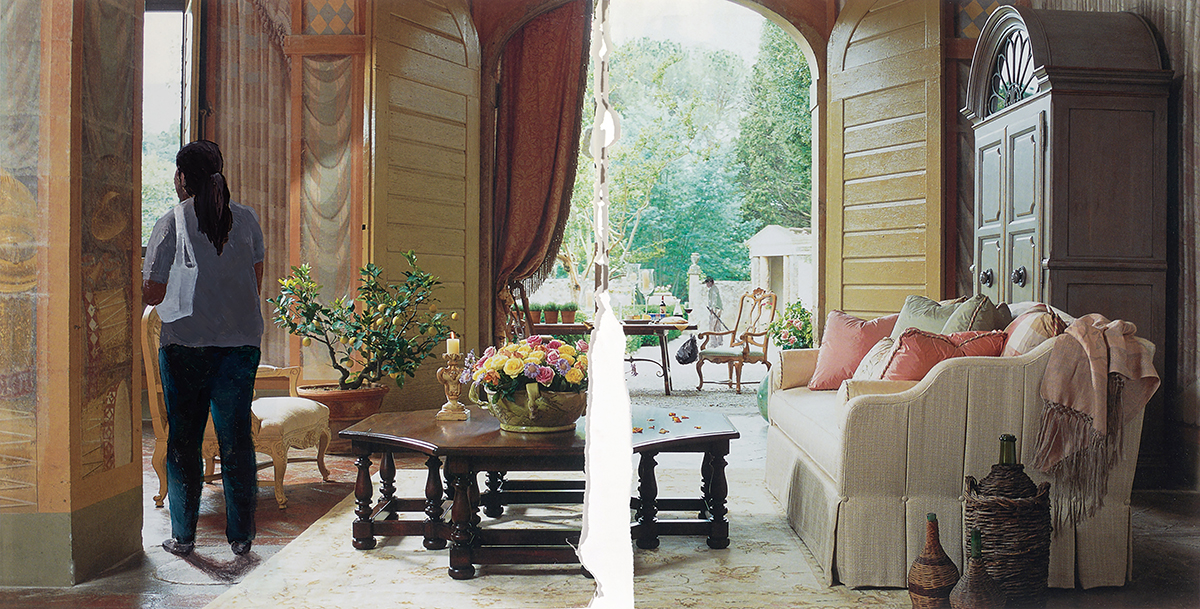
Ramiro Gomez
Domestic Scene, Beverly Hills, 2013
Acrylic on two magazine leaves / 11.5 x 16 in.
Collection of Alfred Fraijo Jr. and Arturo Becerra-Fraijo
node 03

Ramiro Gomez
Ismael Waiting for his Check, 2013
Acrylic on magazine leaf / 11.5 x 8 in.
Collection of Alfred Fraijo Jr. and Arturo Becerra-Fraijo
node 03
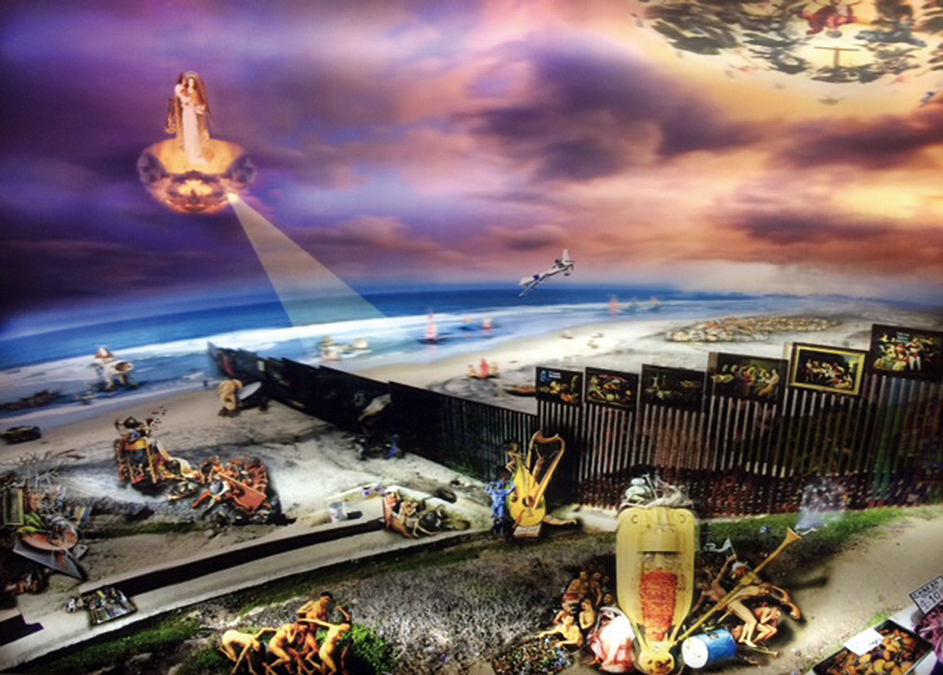
Jamex and Einar de la Torre
Border Park of Earthly Delights, 2014
Cast resin, found objects, lenticular, and LED light box in aluminum frame / 48 x 63 x 5 in.
AltaMed Art Collection, courtesy of Cástulo de la Rocha and Zoila D. Escobar
node 03
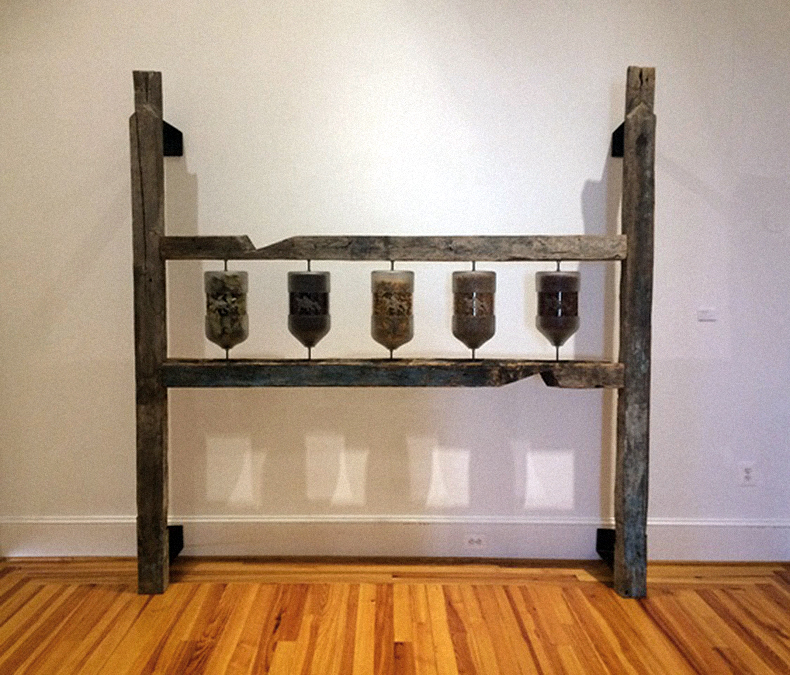
Viviana «Viva» Paredes
Bendición Para Un Mojado (A Blessing for a Wetback), 2010
Blown glass, medicinal herbs, reclaimed wood, and steel / 84 x 96 x 20 in.
AltaMed Art Collection, courtesy of Cástulo de la Rocha and Zoila D. Escobar
node 03
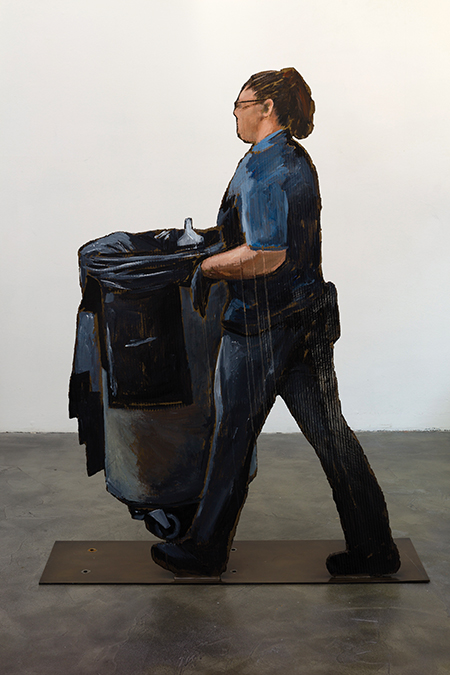
Ramiro Gomez
Lupita, 2017
Painted bronze / 60.25 x 45 x 11 in.
AltaMed Art Collection, courtesy of Cástulo de la Rocha and Zoila D. Escobar
node 03
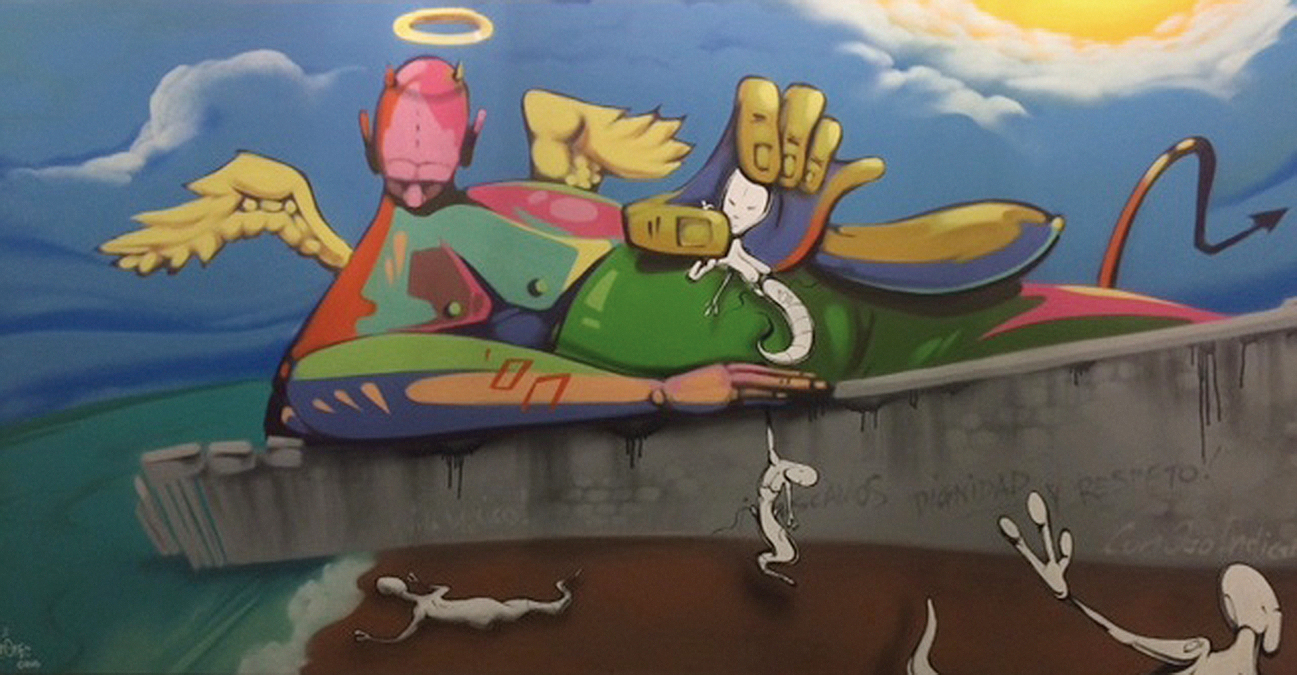
Man One
ALIENATION, 2014
Acrylic and aerosol on panel / 48 x 96 in.
AltaMed Art Collection, courtesy of Cástulo de la Rocha and Zoila D. Escobar
node 03

Eloy Torrez
Migration, 2000-2005
Oil on canvas / 33.25 x 150.25 in.
AltaMed Art Collection, courtesy of Cástulo de la Rocha and Zoila D. Escobar
node 03
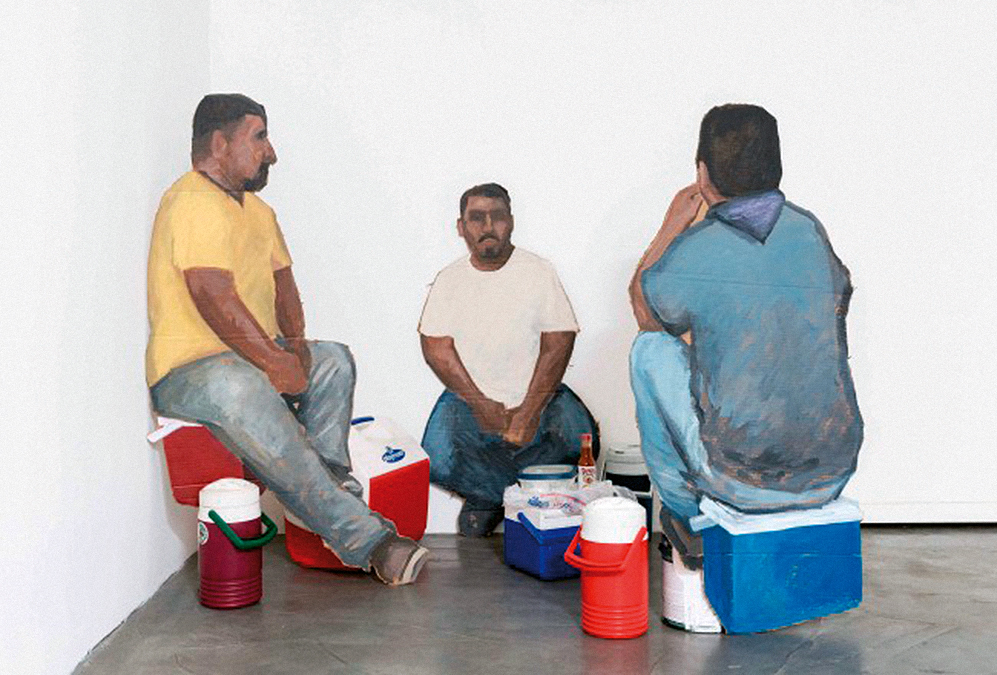
Ramiro Gomez
A Lunchtime Conversation, 2015
Acrylic on cardboard / 70 x 36 x 36 in.
AltaMed Art Collection, courtesy of Cástulo de la Rocha and Zoila D. Escobar
node 03
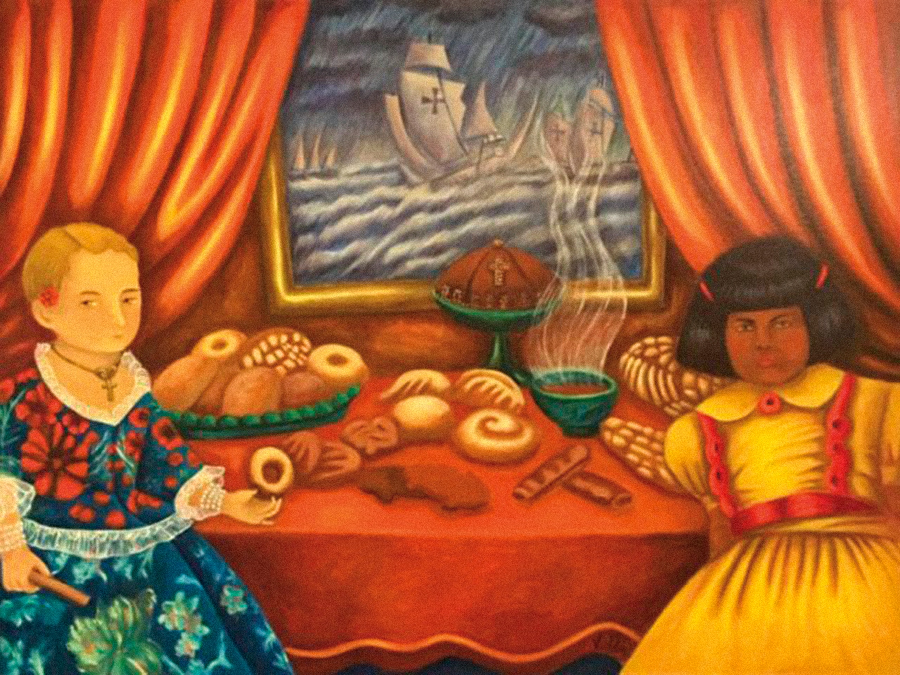
Patssi Valdez
Pan Mexicano (The Merging of Two Cultures), 2017
Acrylic on canvas / 36 x 48 in.
Collection of Cástulo de la Rocha and Zoila D. Escobar
node 03
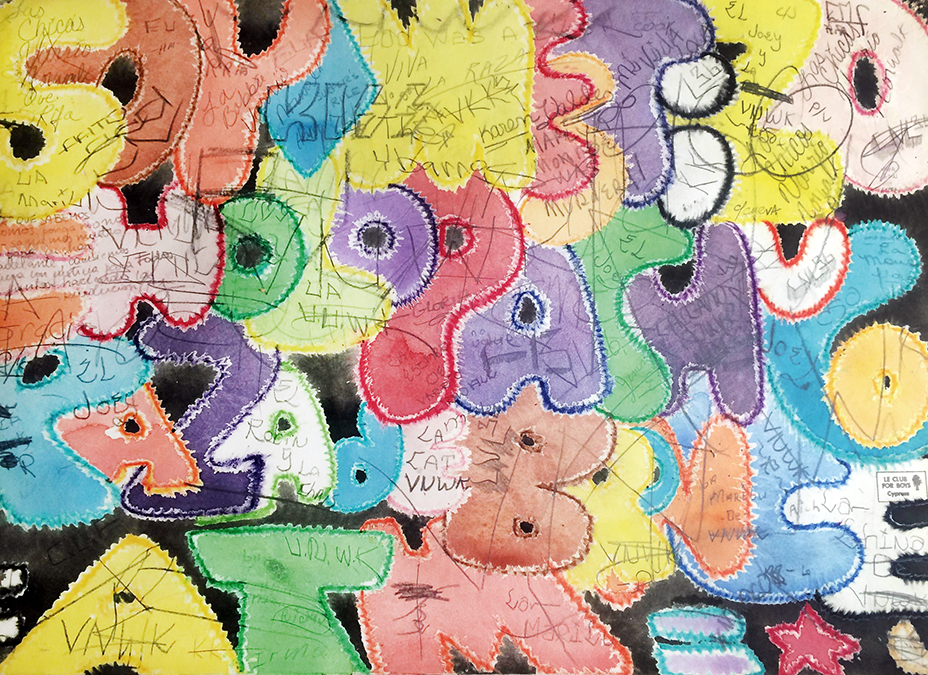
Roberto «Beto» de la Rocha
Soy Mestizo (Color), 1974
Pastel, watercolor, ink, and pencil on paper / 21 x 31.5 in.
The de la Rocha Family Collection
node 03
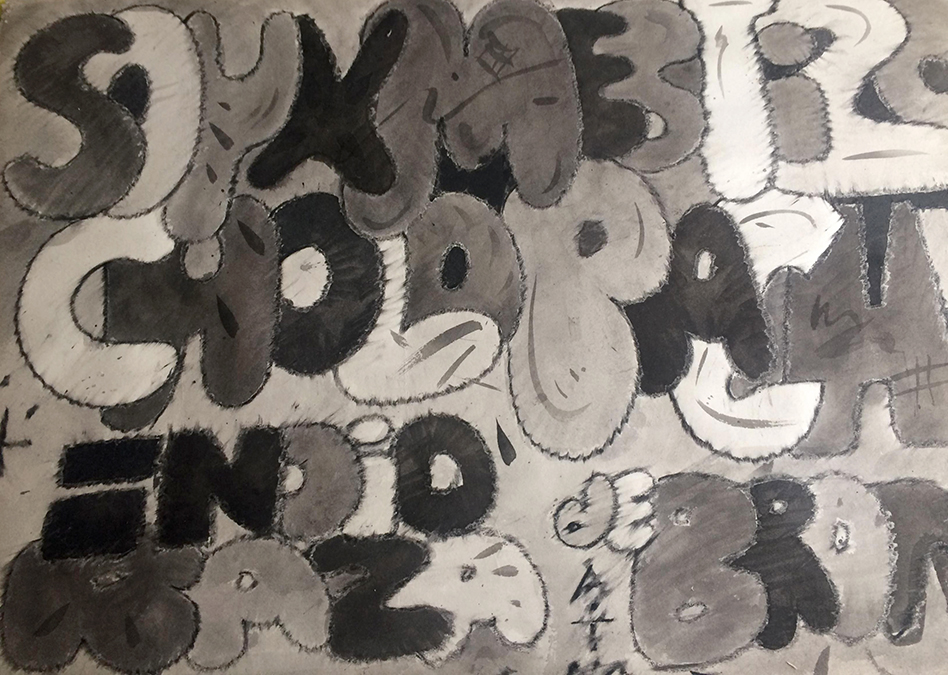
Roberto «Beto» de la Rocha
Soy Mestizo (Black and White), 1974
Charcoal and ink on paper / 21 x 31.5 in.
The de la Rocha Family Collection
node 03

Roberto «Beto» de la Rocha
El Arte Chicano (Color), 1974
Pastel, watercolor, ink, and pencil on paper / 21 x 31.5 in.
The de la Rocha Family Collection
node 03
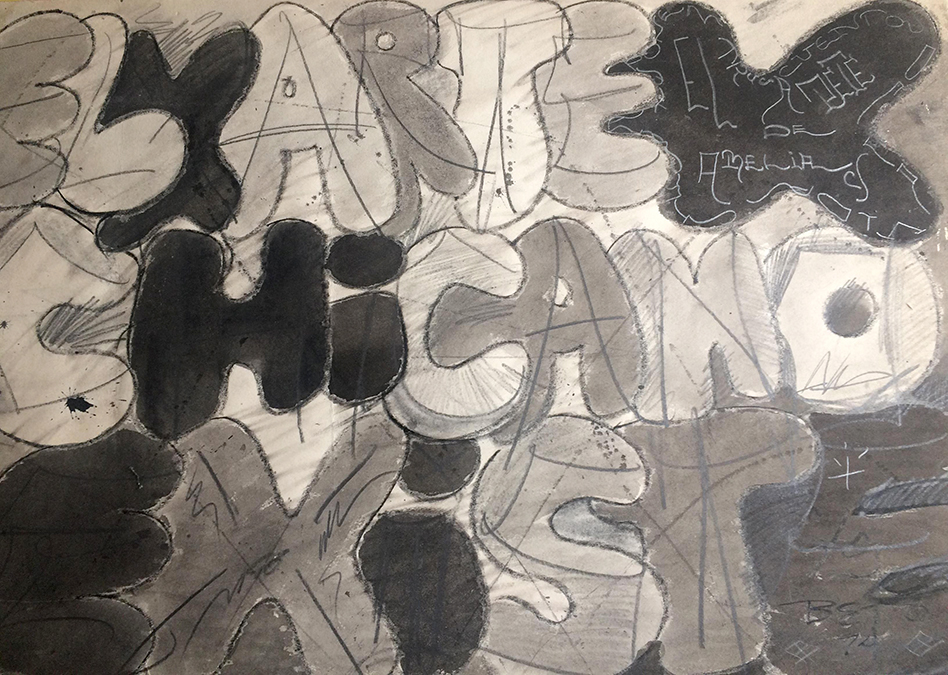
Roberto «Beto» de la Rocha
El Arte Chicano (Black and White), 1974
Charcoal and ink on paper / 21 x 31.5 in.
The de la Rocha Family Collection
node 03
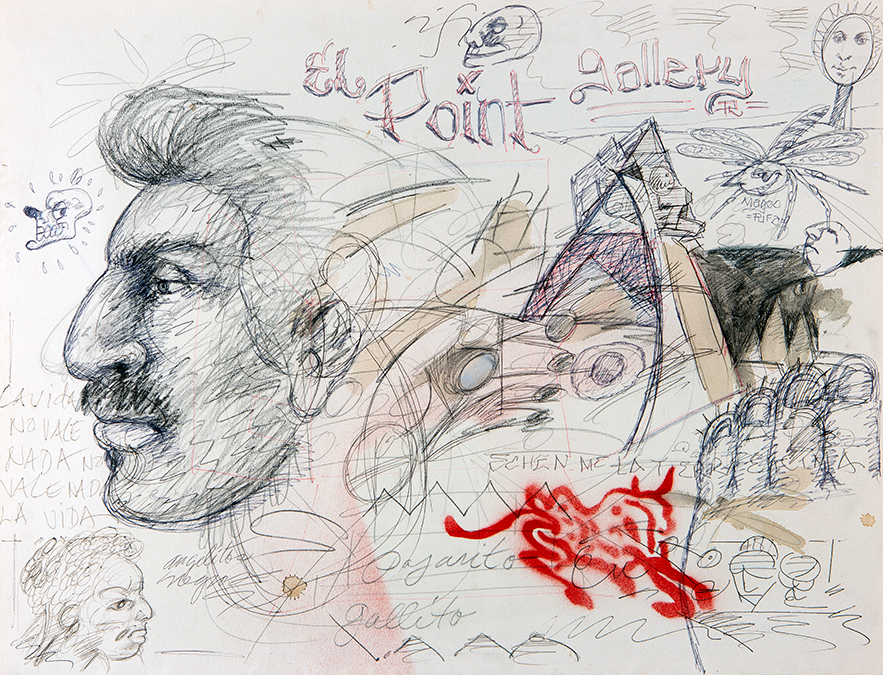
Los Four (Carlos Almaraz, Roberto «Beto» de la Rocha, Gilber «Magu» Luján and Frank Romero)
El Point Gallery, c. 1970s
Ink, pencil, stencil, and color pencil on paper / 23 x 29 in.
The de la Rocha Family Collection
node 04
Identity, as a core expression of one’s subject position, is a recurrent topic in Chicano art. Set against the racialized systems of the US and within the context of the complex matrix of the borderlands —a concept that moves beyond geographies to inhabit the self— the space of identity is not fixed or stagnate, but is rather negotiated and constantly evolving. Identity emerged as a critical subject in US Latino art in the twentieth century, often reflecting the in-betweenness of nationalisms and bifurcated cultural imaginaries of the immigrant experience, and in relationship to histories of colonization.
The Chicano Art movement concretized the importance for speaking about identity as a means of empowerment and self-awareness. The era of Identity Politics in the 1980s and early 1990s that followed reflected deep inquiry into the subject, which in turn was trailed by a rejection of identity-based art beginning in the mid-to-late 1990s, played out against the backdrop of the rise of globalism at the turn of the 21st century. In the current millennial period, intersections and the cross-pollinating of images, ideas and concepts worldwide situate issues of identity in Chicano art within globalized discourse. In this expanded playing field, identity finds renewed footing in our multiplatform image-based era.
Chicano art has developed not only as an expression of political and collective identity, but is also reflective of an incredibly diverse and nuanced landscape of artistic practices, ranging from engagement with any and all major art movements, interrogating areas of personal artistic exploration, addressing questions of gender, race, class and more. The notion of mapping identity is one that allows us to survey and contemplate responses to broad cultural questions, including the politics of positionality and place, and gestures that denote both inner and outer worlds of the self.
node 04
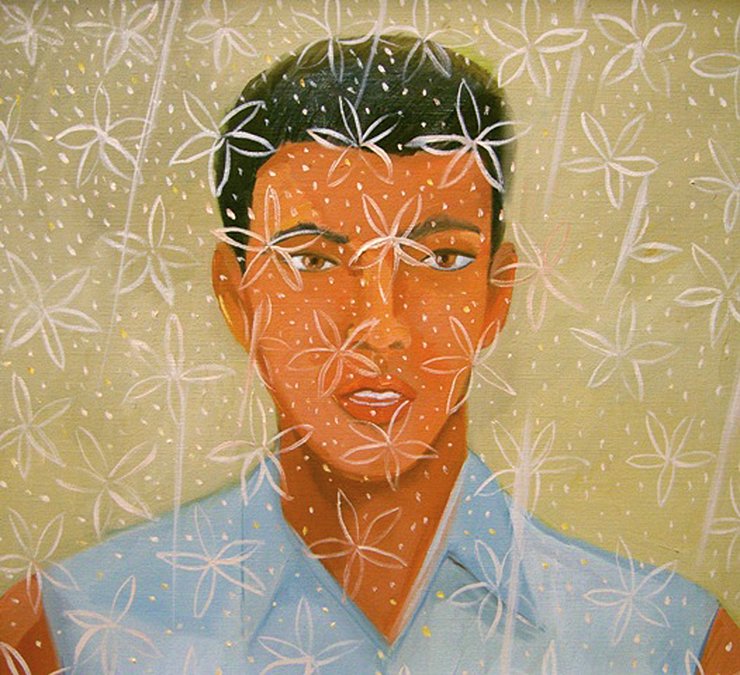
Roberto Gil de Montes
Untitled, 2007
Oil on linen / 24 x 24 in.
AltaMed Art Collection, courtesy of Cástulo de la Rocha and Zoila D. Escobar
node 04
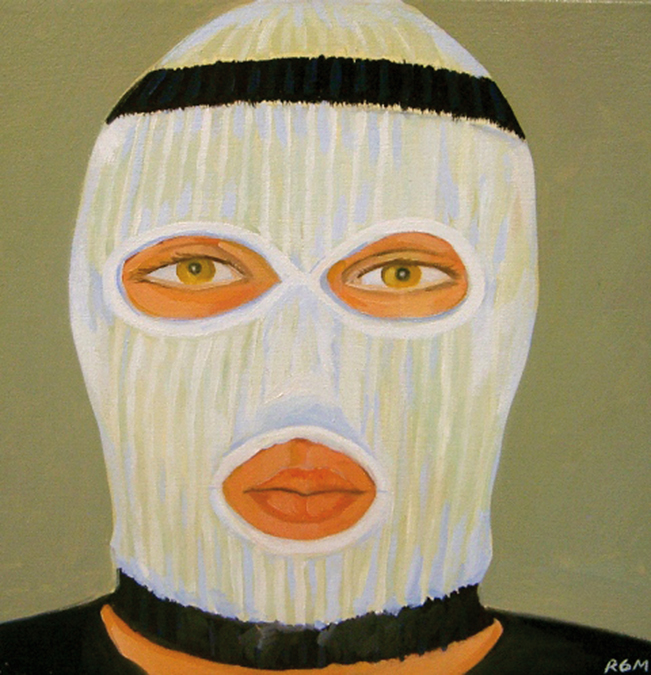
Roberto Gil de Montes
Ski Mask, 2005
Oil on canvas on board/ 13.75 x 13.75 in.
AltaMed Art Collection, courtesy of Cástulo de la Rocha and Zoila D. Escobar
node 04
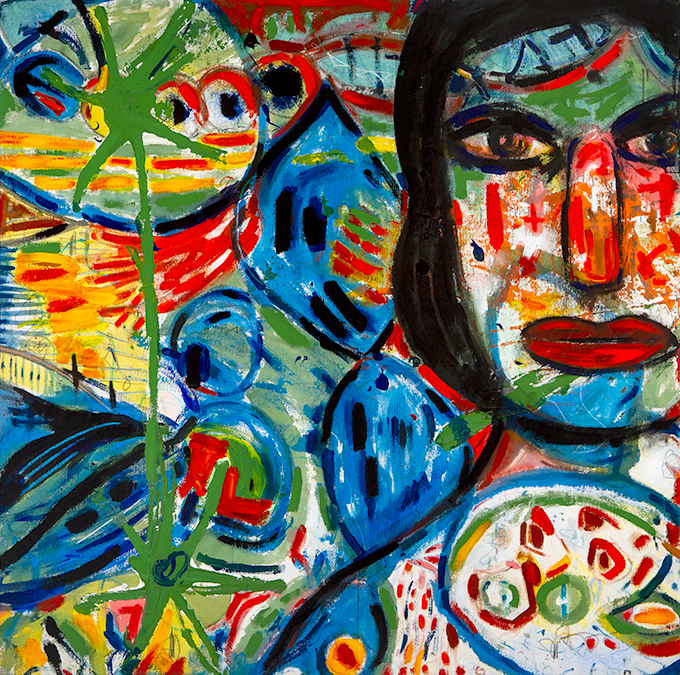
Gronk
Griselda, 2009
Acrylic and mixed media on canvas / 62 x 62 in.
AltaMed Art Collection, courtesy of Cástulo de la Rocha and Zoila D. Escobar
node 04
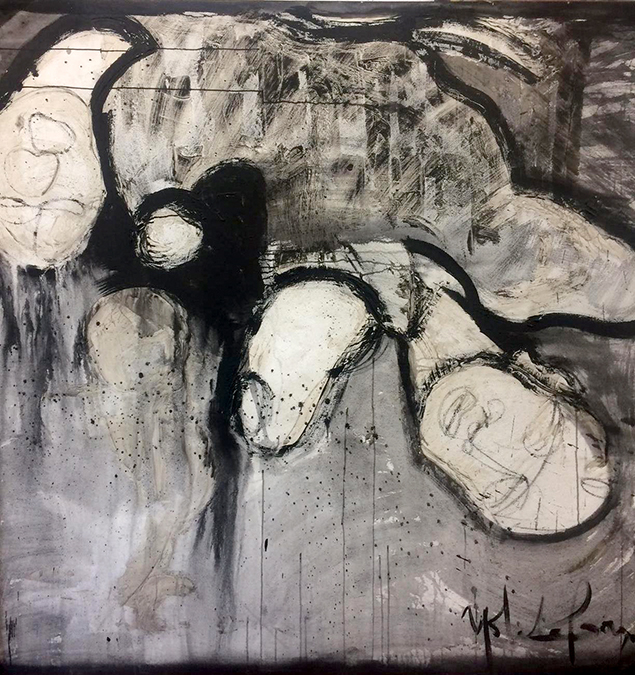
Yolanda Gonzalez
Reaching for Insanity: Metamorphosis Series, 1990
Acrylic on canvas / 72 x 72 in.
Courtesy of the artist
node 04
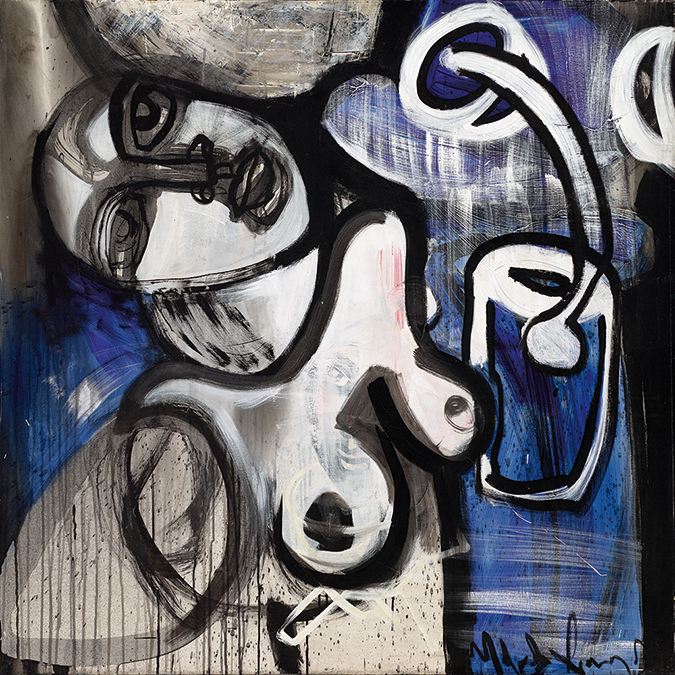
Yolanda Gonzalez
Blue Conga, 1990
Acrylic on canvas / 48 x 48 in.
Courtesy of the artist
node 04
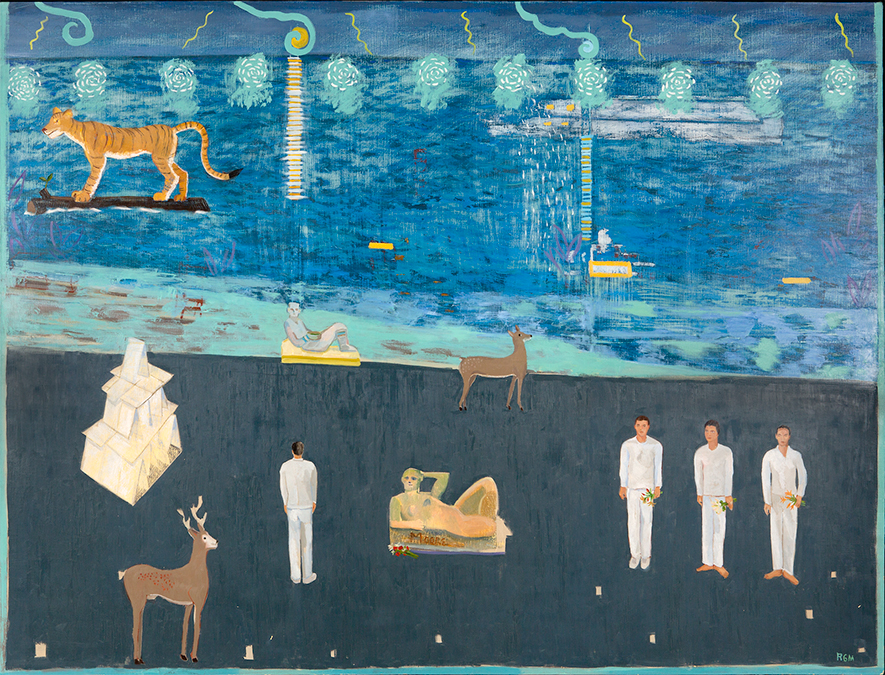
Roberto Gil de Montes
Henry Moore, 2014
Oil on linen / 75 x 98.5 in.
AltaMed Art Collection, courtesy of Cástulo de la Rocha and Zoila D. Escobar
node 04
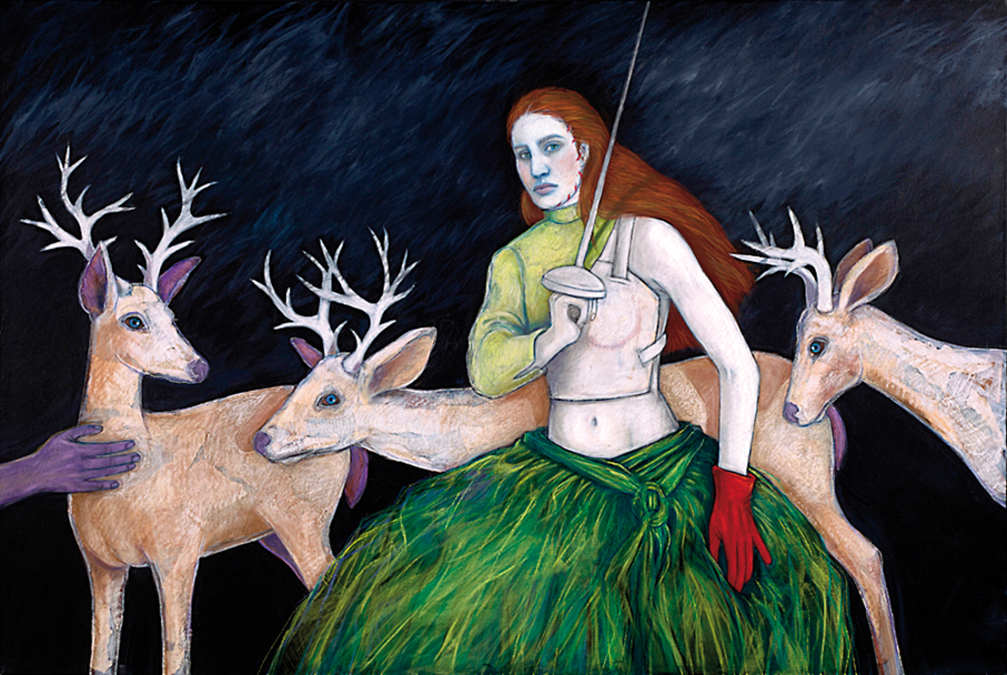
Judithe Hernandez
L’EPPE DE SAINT JEANNE (The Sword of Saint Joan), 2013
Pastel and mixed media on canvas / 40x 60 in.
Courtesy of the artist
node 04
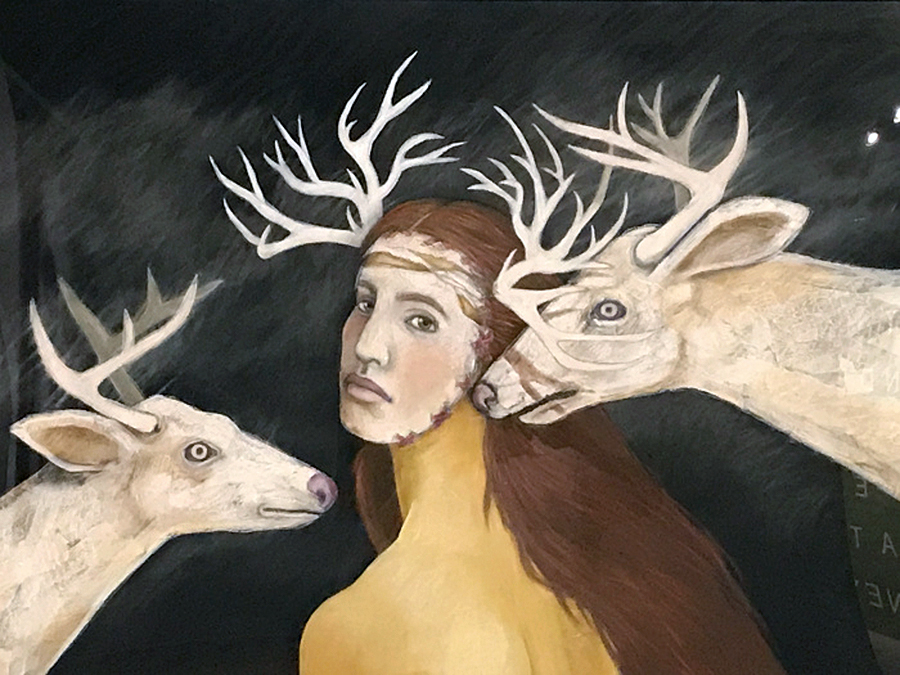
Judithe Hernández
THE PURIFICATION (La Purificación), 2013
Pastel and mixed media on archival wood panel / 30 x 40 in.
Courtesy of the artist
node 04
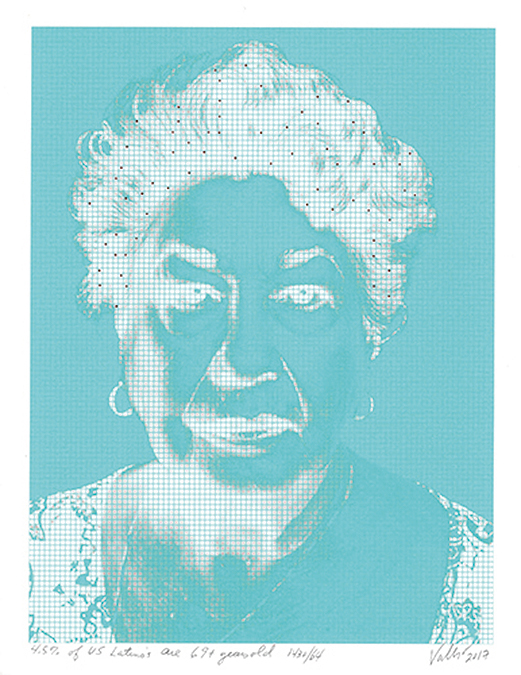
Linda Vallejo
The Brown Dot Project: 4.5% of US Latinos are 69+ Years Old, 2017
Repurposed photograph, pigment print, non-photo blue pencil, archival marker / 11 x 8.5 in.
AltaMed Art Collection, courtesy of Cástulo de la Rocha and Zoila D. Escobar
node 04
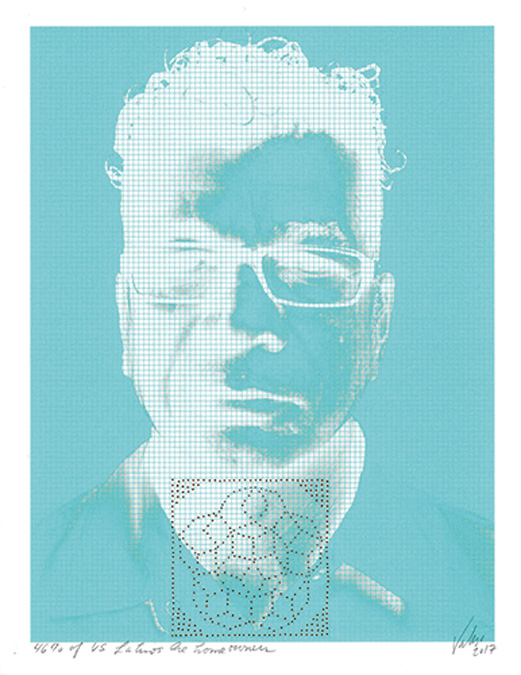
Linda Vallejo
The Brown Dot Project: 46% of US Latinos are Homeowners, 2017
Repurposed photograph, pigment print, non-photo blue pencil, archival marker / 11 x 8.5 in.
AltaMed Art Collection, courtesy of Cástulo de la Rocha and Zoila D. Escobar
node 04
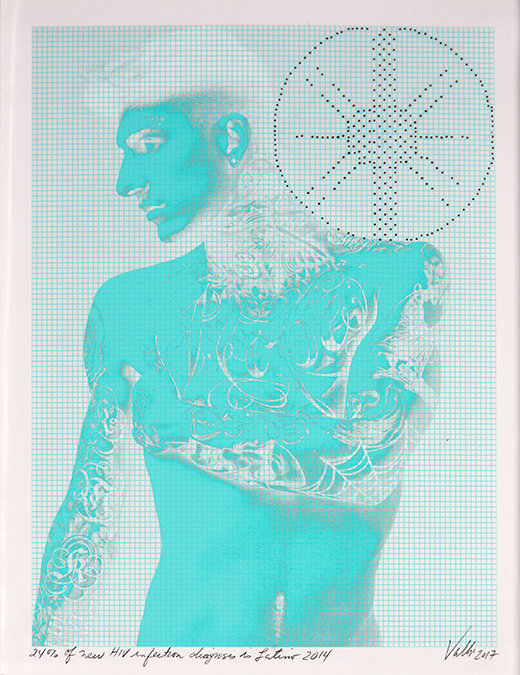
Linda Vallejo
The Brown Dot Project: 24% of New HIV Infection diagnosis is Latino, 2017
Repurposed photograph, pigment print, non-photo blue pencil, archival marker / 11 x 8.5 in.
AltaMed Art Collection, courtesy of Cástulo de la Rocha and Zoila D. Escobar
node 04
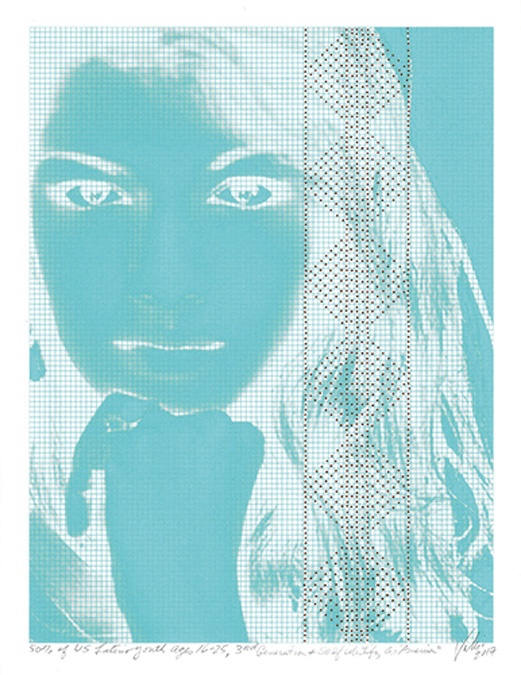
Linda Vallejo
The Brown Dot Project: 50% of US Latinos Youth Ages 16-25, 3rd Generation, Self-Identify as American, 2017
Repurposed photograph, pigment print, non-photo blue pencil, archival marker / 11 x 8.5 in.
AltaMed Art Collection, courtesy of Cástulo de la Rocha and Zoila D. Escobar
node 04

Linda Vallejo
The Brown Dot Project: 64% of US Latinos are of Mexican Heritage, 2017
Repurposed photograph, pigment print, non-photo blue pencil, archival marker / 11 x 8.5 in.
AltaMed Art Collection, courtesy of Cástulo de la Rocha and Zoila D. Escobar
node 04
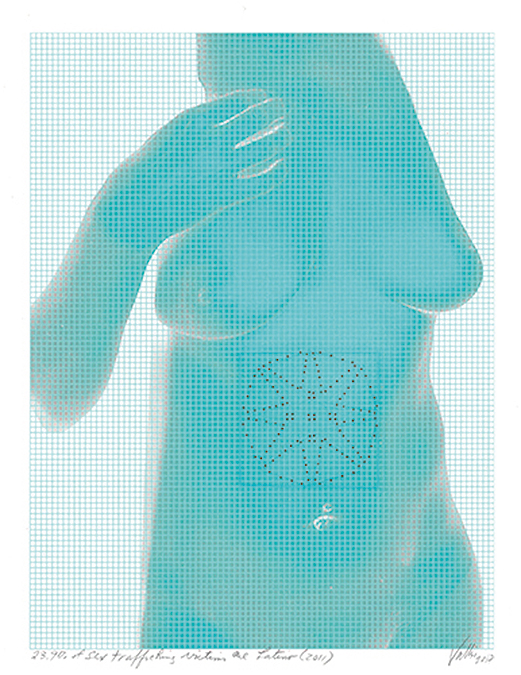
Linda Vallejo
The Brown Dot Project: 23.9% of Sex Trafficking Victims are Latino, 2017
Repurposed photograph, pigment print, non-photo blue pencil, archival marker / 11 x 8.5 in.
AltaMed Art Collection, courtesy of Cástulo de la Rocha and Zoila D. Escobar
node 04
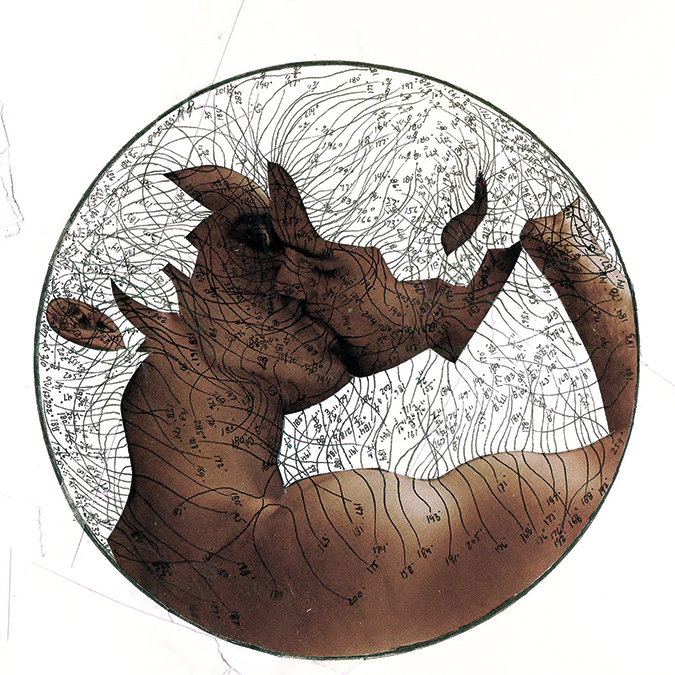
Enrique Castrejon
Anatomy of a Kiss, 2016
Collage, glue, acid-free adhesive tape, and pigment ink on ripped paper / 8 x 8 in.
Courtesy of the artist
node 04

Enrique Castrejon
The Stars We Are, 2016
Collage, glue, acid-free adhesive tape, and pigment ink on ripped paper / 8 x 8 in.
Courtesy of the artist
node 04
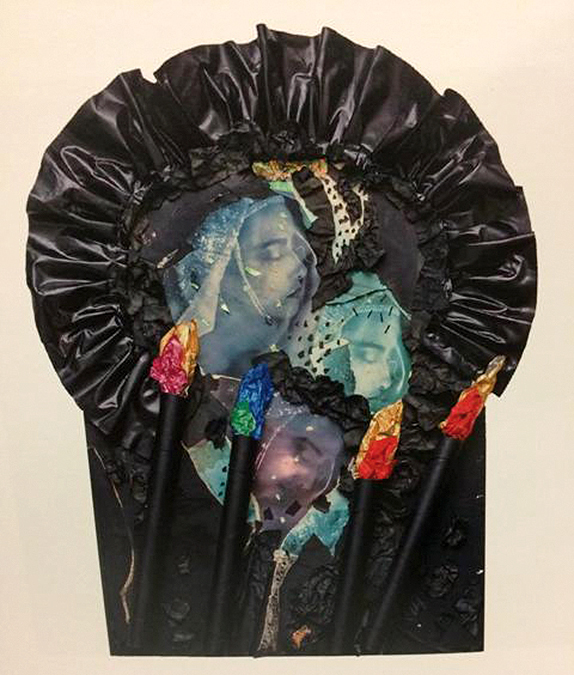
Patssi Valdez
Portrait of Sylvia Delgado, c. 1980
Mixed media photo collage / 50 x 43 in.
Courtesy of the artist
node 04
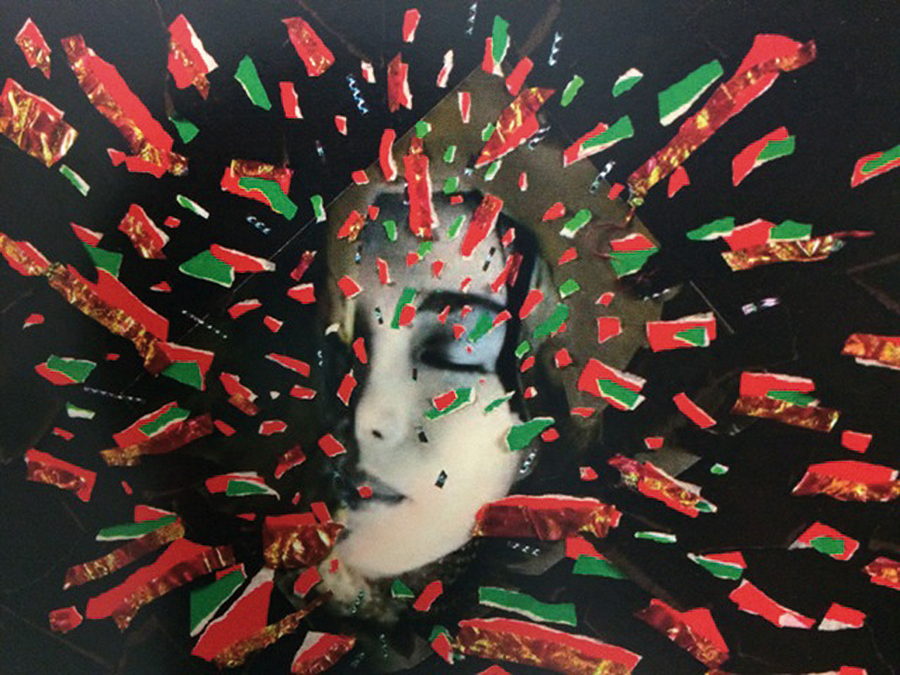
Patssi Valdez
Phyra, c. 1980
Mixed media photo collage / 24.6 x 30.7 in.
Courtesy of the artist
node 04
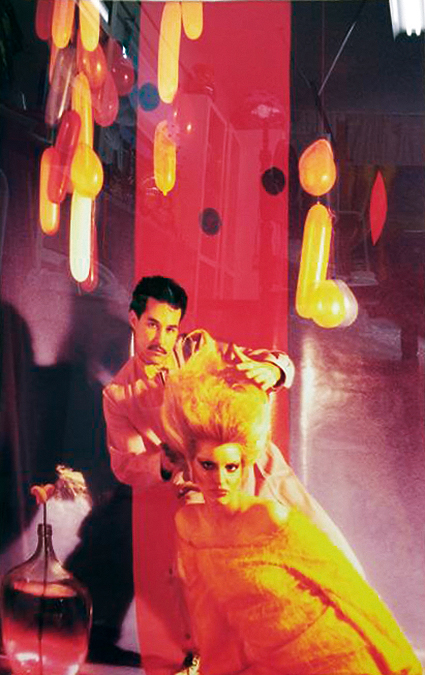
Patssi Valdez
Portrait of Anthony Villareal and Dede Diaz, c. 1980
Digital print / 33 x 24 in.
Courtesy of the artist
node 04
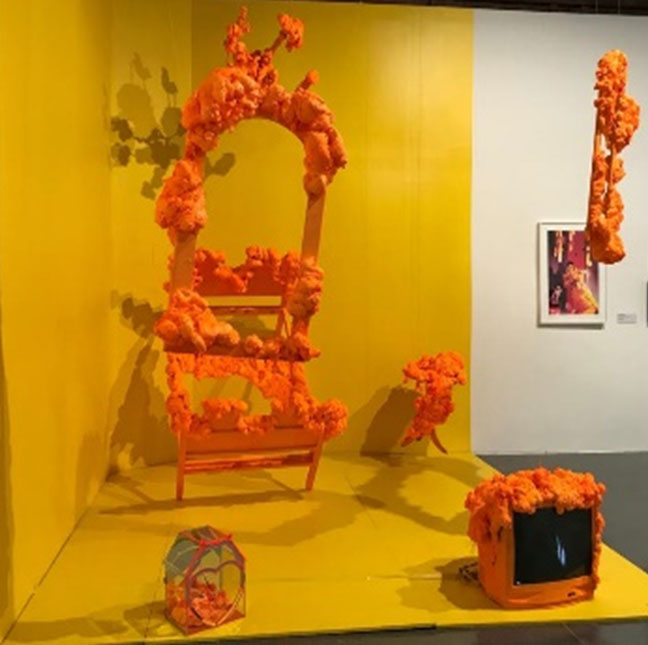
Gabriela Ruiz
A Cinderella Story for Everyday Objects, 2018
Site-specific DIY installation integrated with locally-sourced objects from Mexico City and re-imagined by the artist.
Courtesy of the artist
node 05
While appearing to be a simple, innocuous punctuation mark used for joining words or demarcating the syllables of a single word, the hyphen is a much more powerful symbol capable of uniting just as easily as it can divide. As a bridge, the hyphen can bring together two cultural identities, such as “Mexican-American” or “African-American”, allowing both cultures to co-exist while maintaining their distinct characteristics. However, in keeping with its nature, the hyphen isolates and differentiates in order to highlight the specific qualities of the words it is actually separating.
“Mexican-Americans”, “Latino-Americanos”, “French-Canadians”, are hyphenated groups who are active in more than one sphere. Cars are metaphoric hyphens. Although they isolate us from the rest of the world, they can be consciously, actively exercised to traverse new experiences and places.
Centered around the freeway capital of the world, Los Angeles Chicano culture naturally drinks deeply of the ultra-mobile-four-wheeled civilization of the 20th century. It was this popular fascination that created the “Low Rider”, one of Chicanismo’s major gifts to modern technology. And naturally, Chicano art reflects the Eastside Aztlan’s almost spiritual obsession with the car in general —the vintage Chevrolet in particular— as a symbol of freedom, mobility, sanctuary and transcendence.
The mobile culture of the 20th century brought a sense of freedom, allowing individuals to traverse far and wide, moving beyong their neighborhoods and cities. The vehicles which were used provided escape, exploration, expansion, and growth both literally and metaphorically. In a sense, the cars themselves act as vehicles of transformation. And, similarly, neon serves as a metaphor for transformation and transcendence, as it also straddles two worlds —historic and modern— like those of Mexican and American heritages.
By actualizing their vision during the creative process or by reaffirming their artistic and cultural identity, the artists in this exhibit have allowed themselves to transcend social labels and move beyond others’ perceptions of who they are based on strict geographical boundaries.
node 05
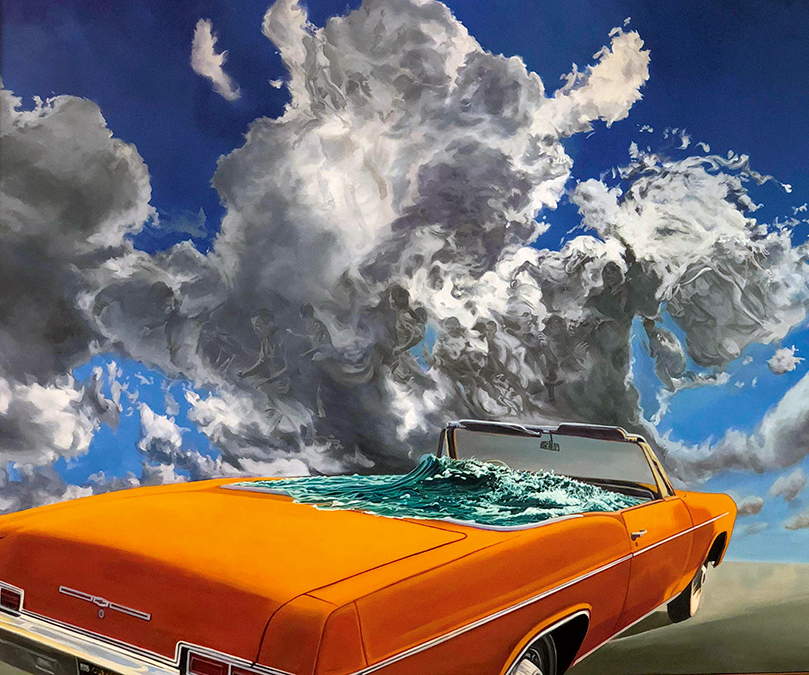
John Valadez
Drive-in, 2014
Acrylic on canvas / 98 x 122 in.
AltaMed Art Collection, courtesy of Cástulo de la Rocha and Zoila D. Escobar
node 05
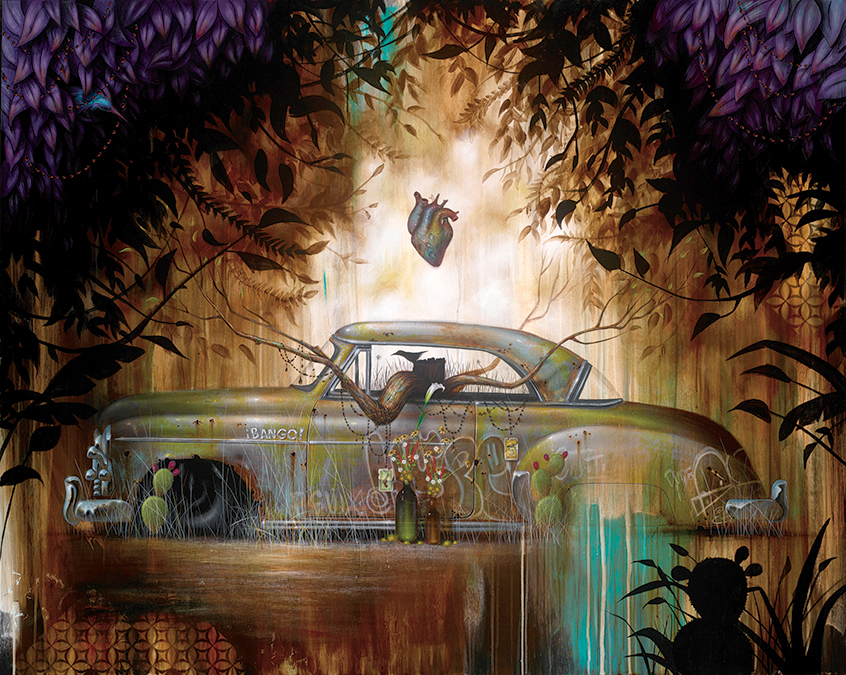
Johnny «KMNDZ» Rodriguez
Atascado, 2015
Acrylic and aerosol on panel / 48 x 60 in.
AltaMed Art Collection, courtesy of Cástulo de la Rocha and Zoila D. Escobar
node 05
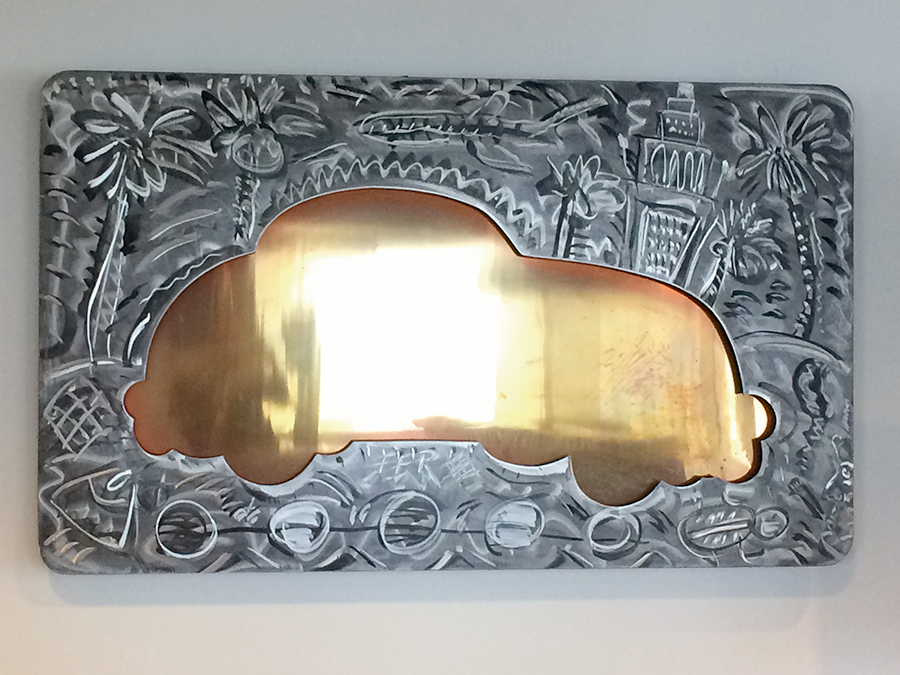
Frank Romero
Urban Landscape, 1989
Aluminum and copper / 36 x 60 x 3.5 in.
Courtesy of Deloitte
node 05
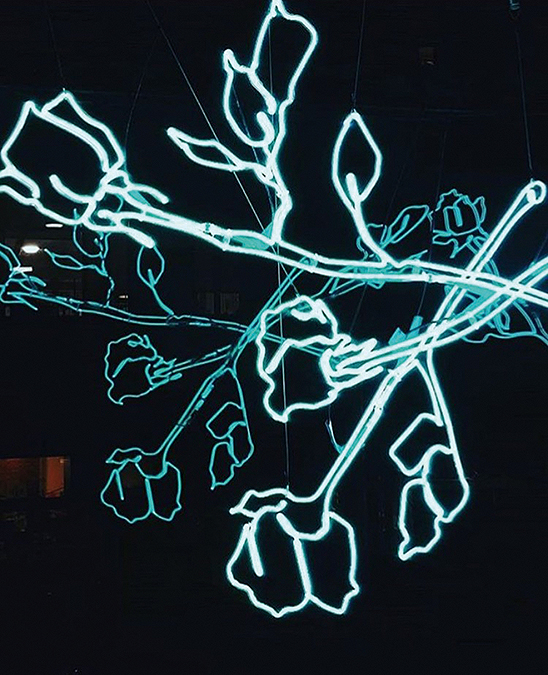
Leticia Maldonado
Strewn, 2018
Installation of ten 8mm glass tubing pumped with argon/mercury (neon) / 5 x 18 x 4 feet
Courtesy of the Fisher Family Collection, Spadaro Collection, and Juan Velasco
node 05

Johnny «KMNDZ» Rodriguez
Palindrome, 2019
Set of 2. Acrylic on wood panels / 96 x 48 in.
AltaMed Art Collection, courtesy of Cástulo de la Rocha and Zoila D. Escobar
